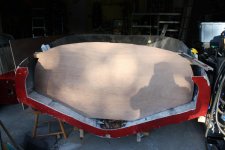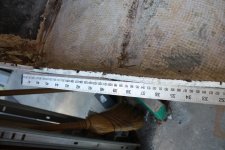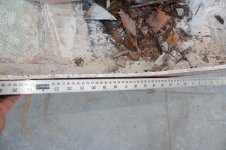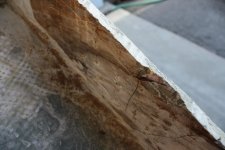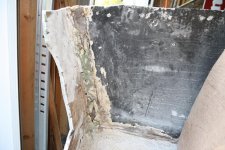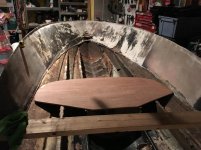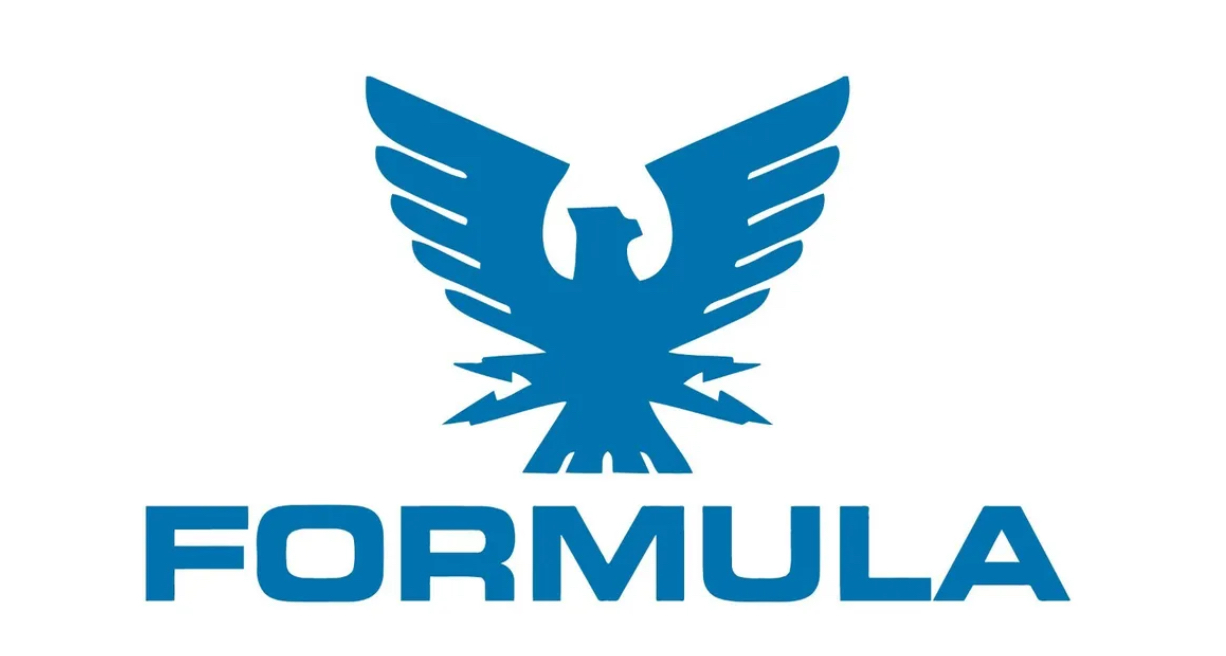An interesting day today... okay, good and bad.
I got the plywood core cut out from the paper template and it fits, well, sort-of okay. The transom is so wavy I couldn't get the edges to meet.
So, I braced the hull at the gunwales and cut out the offending transom that was curved and in the way (it was coming out anyways). I got a better fit but, no joy jet.
To fit the transom I need to true both the inner and outer surfaces. Also the hull sides where they meet the transom are incredibly thin so, I need to build those up.
The remaining transom is just under 1/2" thick. The outer surface is proud and needs to come down at least 1/4" (maybe more) on each side of center. The problem is the inner surface is just filler and is about 1/4" thick with no fabric. It has cracked in many places adds no strength and will probably be a nice home for moisture if I leave it. If I grind the inner surface out then there's hardly any meat for the new tabs. And, if I grind the outer surface true (to mount the false transom) there will be nothing left.
So, my plan (and feel free to comment) is to grind out the inside down to the fabric (about 1/4" left). Build it back up with a few courses of 1708. then grind the exterior surface flat. I can then add more courses to the inside for strength as needed. Then feather the inside surface, install my false transom outside and glass the whole damn thing up. Then add the plywood core and tab & glass that assembly in. In this way I still have the strength from the inside pushing outward. This is a lot of work.
The alternative is to grind the inside, mount the plywood core to the remaining tab inside and then feather outside & glass from the outside and the inside to the desired thickness.
Comments
